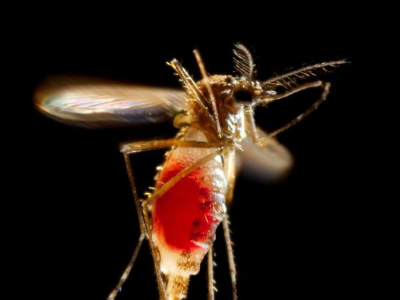Sep 30, 2008 (CIDRAP News) – Four organizations that represent many of the nation's public health officials issued a report yesterday detailing how 6 years of federal funding has improved preparedness, though serious challenges remain, such as hiring and training lab workers and local preparedness planners.
The report compiles results from member surveys from each of the four groups: the Association of State and Territorial Health Officials (ASTHO), the Association of Public Health Laboratories (APHL), the Council of State and Territorial Epidemiologists (CSTE), and the National Association of County and City Health Officials (NACCHO). The 16-page report is available on ASTHO's Web site.
The report focuses on funding from the Center for Disease Control and Prevention's (CDC's) Public Health Emergency Program (PHEP), a cooperative grant program designed to help state and local public agencies build the capacity to respond to health emergencies such as pandemic influenza and bioterrorist attacks.
According to the report, the CDC has distributed $4.9 billion in PHEP funds from fiscal years 2002 though 2007.
Four accomplishment and challenge areas are addressed in the report: preparedness planning, evaluation and improvement, disease detection and investigation, and response and recovery.
Planning and assessment
One of the major benefits of PHEP funding has been a dramatic rise in emergency response plans at state and local public health departments. For example, in 2002 as PHEP funding began, only 11% of states had complete plans, but by 2007 all had developed all-hazards plans and all state public health laboratories had continuity-of-operations plans or were covered by state plans, the report says.
By 2007, all public health labs had developed clinical lab databases, and many state labs had strengthened their partnerships with law enforcement and first responders. In addition, 86% of local health departments have learned how to use the National Incident Management System, the nation's first standardized system for managing responses to major emergencies.
PHEP funds have helped state and local groups conduct preparedness exercises and produce after-action reports to improve planning. According to NACCHO, state health agencies participated in more than 700 exercises in 2007, while local groups participated in even more. The report says 90% of state public health laboratories have conducted drills with first responders, other state agencies, and sentinel labs at hospitals.
Citing challenges that still need to be addressed, the report says many local health departments lack plans for mass patient care and fatality management. Also, staffing gaps affect many local health departments: 43% of small departments and 9% of medium-size department have no staff dedicated to preparedness activities. Gaps affect state public health labs, as well: only a quarter can screen or test specimens for radiation exposure.
Detection improvements
PHEP investments have enabled state and local departments to expand lab space, add technology, and offer more services, the report states. For example, 71% of large local health departments and 61% of small ones have developed epidemiologic investigation plans. Also, staffing and training enhancements have boosted the number of labs that can perform polymerase chain reaction (PCR) testing for bioterrorism agents and time-resolved fluorescence assays for toxins such as ricin.
Improvements in disease surveillance infrastructure mean that 96% of states have round-the-clock communication links with hospitals, the report says.
Challenges in the area of disease detection include integration with other lab networks; funding shortfalls and lack of technical guidance have hampered progress, the organizations noted. Another gap is a plan to assess and expand laboratory surge capacity.
Response readiness
The report says that PHEP funding has produced more robust response systems. For example, all state health departments now participate in the CDC's Health Alert Network, and all use more than one communication system to file disease reports.
States and cities have improved their ability to distribute Strategic National Stockpile supplies, and more epidemiologists are available to assist with response and recovery, the report says.
The four groups have identified several priorities for improving response capacity. One-third or more of respondents listed medical and hospital surge capacity, operations continuity, utilization of healthcare volunteers, countermeasure distribution, radiation response, chemical response, and disaster recovery.
Funding outlook
The groups aired concerns about the future funding picture, stating that the proposed fiscal year 2009 PHEP allocation is 22% less than the previous year. "This cut is accompanied by the elimination of federal funding to states and localities to prepare for the inevitable threat of pandemic influenza," they wrote.
The report reiterates the need to build a workforce to plan for and respond to public health emergencies. "Building workforce devoted to emergency preparedness is our greatest overarching need," it says.
Jeff Levi, executive director of Trust for America's Health, a nonprofit, nonpartisan group based in Washington, DC, told CIDRAP News that the report generally shows that investments such as PHEP can pay off. "And the report does a very good job of describing the ongoing challenges, particularly regarding staffing," he said, adding that the projected impact on labs is extremely concerning.
Progress on all of the public measures listed in the report will stall unless funding improves, Levi said, adding, "Now wouldn't be the time to cut back."
See also:
Feb 20 CIDRAP News story "CDC says state preparedness much improved since 2001"


















